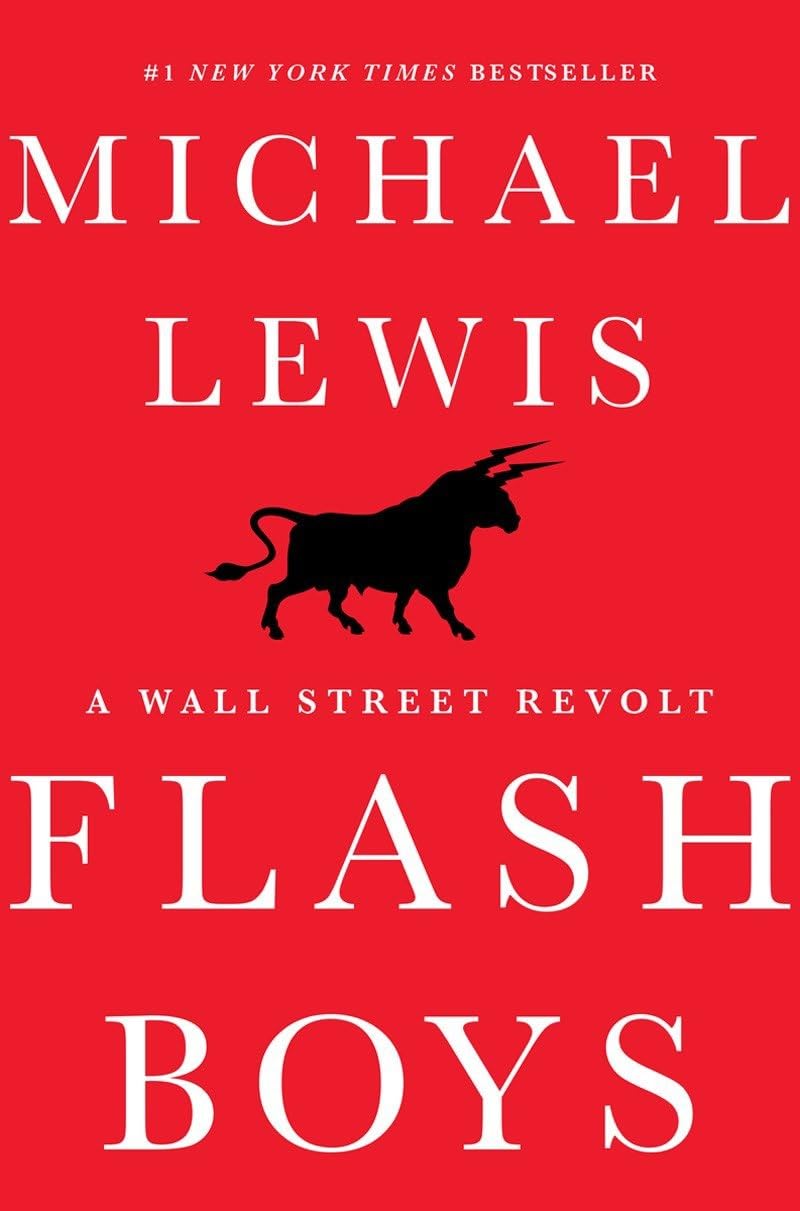
Flash Boys: A Wall Street Revolt by Michael Lewis
Financial markets have changed drastically over the last few decades. Not only did markets become more complex and interconnected, but also a new competitor has entered the market: the computer. Once defined by physical speed and face-to-face competition, trading is now dominated by milli-, micro-, and even nanoseconds (billionths of a second). This new rise in technology gave way to a new type of firm, the High Frequency Trading (HFT) firm. In the book "Flash Boys" by Michael Lewis, we follow Brad Katsuyama on his journey to combat such firms to make markets fair again.
🖊️ Michael Monroe Lewis (born 1960) is an American author and financial journalist. He mostly writes on business, finance, and economics. The book follows Bradley Toshio Katsuyama (born 1978), a Canadian financial services executive. He is the CEO and co-founder of the IEX, the Investors Exchange, and left RBC in 2012 to co-found IEX under the premise that it would be a fairer stock trading venue than other exchanges.
My 🔑 takeaways:
- The Problem Discovery: While working at the Royal Bank of Canada (RBC) in New York, Katsuyama noticed that his orders were not executed properly—prices would shift as soon as he pressed "Enter." This sparked a deep investigation into the stock market's inner workings.
- Speed Arms Race: Some firms were investing millions of dollars in reducing latency by just a few milliseconds or even microseconds to gain a slight edge in the market. The landscape of trading has changed drastically—markets are now run by algorithms, and the true "market" is no longer on the trading floors but in data centers. For the NYSE, this is even outside Manhattan, in New Jersey.
- Front-Running: High-frequency trading (HFT) firms were front-running orders, using their speed advantage to detect large orders or the intent to execute them, placing their own trades ahead to profit from price movements.
- Market Complexity: New order types were introduced to benefit HFT firms, making the markets far more complex than necessary. Also, unnecessary intermediation cost investors billions, and every attempt to regulate the financial markets led to new exploits.
- Dark Pools: Dark pools emerged as private stock exchanges run by big brokers, where trades were not immediately visible to the public. Some brokers sold the right to access confidential trading information milliseconds before others for hundreds of millions annually. Unable to compete with HFT firms, banks sometimes exploited and sold information on their orders to these firms.
- Co-location: The NYSE paid a $4.5 million fine to the SEC to settle charges related to co-location, the practice of allowing HFT firms to place their computers near the exchange's servers, gaining faster access to trading data.
- Reg NMS: Regulation National Market System (Reg NMS), implemented by the SEC in 2005 and fully effective by 2007, aimed to modernize and standardize U.S. equity trading. While its goal was to ensure fairness and efficiency, it inadvertently provided advantages to HFT firms by creating latency discrepancies between public feeds and actual exchange prices.
- Market Disruptions: The shift to computer-driven markets, coupled with a lack of transparency, contributed to multiple issues and market crashes such as trading halts, flash crashes, and other disruptions.
- The Solution: Katsuyama and his team developed a tool called "Thor" that delayed orders to ensure they reached various stock exchanges simultaneously, preventing front-running opportunities. Katsuyama left his lucrative job at RBC to create the Investors Exchange (IEX), a fully transparent stock exchange designed to combat HFT manipulation using "Thor."

10 Day Moving Average represents the average of the daily volume for the past 10 trading days.
💭 "People no longer are responsible for what happens in the market, because computers make all the decisions." —Michael Lewis
Final Word
The Investors Exchange (IEX) now handles around 350 million shares a day, which accounts for approximately 2.5-3.0% of the total US equities volume, making it one of the largest exchanges in the country. This is in contrast to the Nasdaq, which processes about 1.8 billion shares daily. This shows just how much interest there is in a fair exchange. Also, many new regulations have come into place to deal with the unfairness of markets when computers entered the market, yet AI and new computational advances will yet again exploit new gaps in the market. As long as technology keeps evolving, there will be a constant battle between the investors, banks, exchanges, intermediaries, and regulators.

